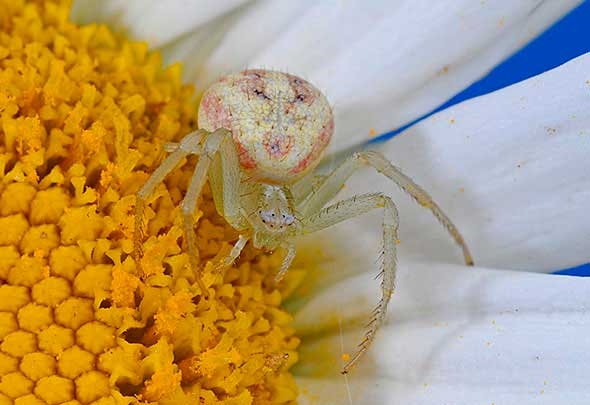If you practice IPM, what better ally is there than this group of predators?
Spiders in the orchard (continued from last issue)
Spiders are often feared by the public. But they do a lot of good in the orchards.
Recent work done with our project has shown that spiders are voracious eaters of many pests including moth larvae such as codling moth.
The 50 or more spider species that might be present in a moderately sized orchard can be divided into two large groups: web-makers (about 55%) and hunting spiders.
Web-makers
Web-makers construct large silken webs (the design is often characteristic of that species). Their prey fly or fall into the webs and are stuck until eaten.
Hunting spiders
Hunting spiders also produce silk, but they don’t build webs to catch their prey. Instead, they use their legs and mouthparts.
Some hunting spiders actively pursue their prey while others use a sit-and-wait prey capture strategy, allowing the prey to come to them.
Sudden appearance
Orchard workers often wonder where the spiders suddenly come from later in the season, after not seeing them earlier.
This is because spring hatching spiders develop slowly and only become noticeable after they have grown larger and started building bigger webs.
This sudden appearance also gives orchard workers the wrong impression that they only have web–building spiders present, when in fact the hunters are all over the trees and orchard floor.
Protect spiders early in the season
Unlike the orchard insects, spiders only have a single generation per year. They overwinter as adults.
Egg sacs may be laid either in the autumn or in the spring. This is important to know from a management standpoint because harsh sprays early in the season may kill the spider populations. Re-establishment of spiders would be a slow process.
See this article in Tree Fruit June 2017




















